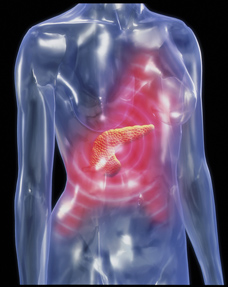Tips on transforming practices to fit changing models of care
When transitioning a medical practice into a patient-centered model, one of the first steps involves focusing on high-risk patients and developing a plan for more intensive management.
Primary care practices must transform themselves to meet the requirements of modern American health care, said John L. Bender, MD, a family physician and chief executive officer of Miramont Family Medicine in Fort Collins, Colo., at the American Academy of Family Physicians' (AAFP) annual meeting, held in San Diego in September.
Dr. Bender offered his own practice's transformation from traditional care to a team-based, patient-centered, continuous care model as an example. His multisite practice is certified as a patient-centered medical home and is efficient enough to see Medicaid patients profitably.

Making this transition is challenging, he and other experts at the meeting acknowledged. But they offered a host of advice on how physicians can help their practices and patients succeed under new models of care.
Predict risk
One key step is to risk-stratify patients, according to Bruce Bagley, MD, president and CEO of TransforMED, a subsidiary of the AAFP that provides consultation and support on becoming a patient-centered medical home.
“Almost all of you could name 5 [of your patients] who really need a lot of help,” he said. “You don't need any fancy equipment to know who the people are who need the most help, but we haven't had a systematic way to deal with them.”
The system should be a simple algorithm that categorizes all patients from the healthiest to the sickest and most in need of support from the practice, he advised. “Identify highest cost, or highest disease burden. Either of those gets you an approximate list. If you also allow the physicians to add to the list, then you have a much more complete list,” said Dr. Bagley.
Dr. Bagley recommended dividing patients into 3 to 6 categories. He described how a 6-category system might work.
- Level 1: Healthy people with no known health risks.
- Level 2: Patients who might be obese or smokers but are not identified as sick.
- Level 3: Patients with a chronic disease, such as diabetes or hypertension, that is well controlled.
- Level 4: Patients with a chronic disease that is not controlled.
- Level 5: Patients with complex diagnoses, the frail elderly and “frequent fliers.”
- Level 6: The very sickest patients, who may need hospice or end-of-life care.
Categorizing patients should be a quick and simple process that any clinician on the care team can handle. “The precision with which you decide to assign anyone to any group is not as important as what you decide to do for them,” said Dr. Bagley.
The patient's risk level should be entered into a field in the electronic medical record (EMR) that is both searchable (to draw up a list of all the patients in a category) and easily noticed during the visit. “If you don’ t have that, put it on the problem list, so every time you call up the patient's chart, it's in your face,” said Dr. Bagley.
While the physician is reviewing the problem list, he or she can consider what else needs to be on it, recommended William Manard, MD, an assistant professor of family medicine at Saint Louis University (SLU) in St. Louis, Mo., and medical director of the SLU Medical Home.
“A problem is basically something you want to keep track of in a longitudinal manner, or you think may have a significant impact on future health, but [not] every single thing that happens to a patient,” he said. For example, past treatment for an upper respiratory infection shouldn't go on the list, but a history of frequent infections could.
Plan care based on risks
Once you've organized these data on the patients, the next step is to plan their care based on expected risks. “Make sure everyone has a care plan,” said Dr. Bagley. “If this, then that.”
For the lower risk levels, the care plan may be as simple as routine screenings and risk factor management. Much of this work can be delegated to nonphysician team members, Dr. Manard noted. For example, he described a study in which medical assistants screened patients for problems with alcohol, tobacco, obesity and inactivity and then directly referred them to treatment, counseling or education.
Patients at higher risk levels will require more intensive management. Registries are a good way to track them, Dr. Bagley said. These, too, can be managed in large part by nonphysicians. For example, if you're tracking diabetic patients, “at the push of a button, it should spit out a list of everyone who hasn't had an eye exam and their phone numbers,” he said.
Physicians might want to put thought into what less obvious concerns should also be tracked for higher-risk patients. “This list might be the 3 or 4 things you really care about ... things that don't jump out of the medical record. You may not have ‘husband died recently’ on the medical record. This can be as simple as an Excel spreadsheet, but I think increasingly we're going to see this embedded in EMRs,” said Dr. Bagley.
The patients at the very highest levels need very intensive management, under programs like Johns Hopkins' Guided Care model, Dr. Bagley said. These patients should be carefully tracked, with all hospital and subspecialist visits noted.
Speakers at the meeting offered additional advice on managing patients' interactions with subspecialists. Dr. Manard encourages patients not to see subspecialists for things he could do instead. “This is key for reducing inappropriate resource utilization,” he said. “You don't need to go see the cardiologist for your high cholesterol ... Would you like to come see me instead?”
Patients who do require subspecialist care should still be encouraged to consult their primary care physician about treatment, added Ted Epperly, MD, a family physician in Boise, Idaho, and clinical professor of family medicine at the University of Washington School of Medicine in Seattle.
Dr. Epperly tells patients to advise their subspecialists that they'd like to discuss any treatments with him first and that he will then talk to the subspecialist if necessary. He explained, “It's not that I'm trying to be a control freak. It's that I'm trying to make sure [patients] don't get roped into doing something they do not need.”
Engage patients, families
To improve care for high-risk patients, primary care practices should also try to engage the patient's family as much as possible in care, Dr. Bagley advised. “I don't think we've done this well in the past,” he said, noting that physicians caring for his elderly father never invited a family member into the exam room.
Engaging patients and families in care was the focus of a whole session at the conference, led by Dr. Epperly. This is important for all types of patients, he noted. “You may be the smartest doctor on the planet, but if you can't get your patients to do something, it doesn't make a difference. I've got patients who can out-eat and out-drink any medication I put them on,” Dr. Epperly said.
He offered some tips for communicating during the patient visit. “Use plain language as much as possible,” he said, or no language at all. “I'm a visual sort of learner, so I'll pull off one of our hand napkins or a piece of paper and I'll diagram it for them. I'm amazed by how many people want to take the diagram with them,” said Dr. Epperly.
Next, verify that your patients absorbed the information. “Make sure a process is in place, either by you or your team in some capacity, to make sure your patients understand when they leave what it is they're supposed to do,” Dr. Epperly said.
One significant way that the new model of care differs from the old is the need to engage patients between visits. The speakers supported e-mailing with patients to regularly collect information like blood pressure or glucose readings or just to answer questions.
Dr. Manard noted that some of his payers are starting to reimburse for e-mail exchanges (at about $15 per conversation) but said it's important to recognize when the answer to a patient's e-mail should be, “Please schedule a visit.”
Physicians should weigh the costs and benefits of patient portals, too. Dr. Manard has found his to be a useful tool and 47% of his patients use it, but the research is not so supportive.
“People have thought that patient portals may reduce the number of visits and have an impact on revenue. But it hasn't been shown to be the case,” he said. “No increased adherence—patients don't do any better at following the directions that we discuss at their visit.”
Other Web-based resources may engage patients, however. Dr. Epperly refers his patients to online videos and other forms of education. “I can say, ‘Mr. Smith, I'd like you to learn more about heart failure. Tonight, I'm going to send you a module. Please take a look at it along with your wife, and take the pre- and post-tests.’” The test results can then be used to assess the patient's understanding, he said.
Assessments should go the opposite way, too, with patients providing feedback on how the practice is doing, Dr. Epperly said. His practice uses a patient satisfaction survey and recently formed a patient advisory group.
“What's come from [the advisory group] has been invaluable ... ‘We're having major problems with parking ... getting through on the phone ... timely notification of appointments,’” he said. The advisory group taught the practice that text messaging of appointment reminders was helpful to patients, especially those who don't speak English well.
All these recommendations for change may sound overwhelming, but the end result will be rewarding and physicians can start small in practice transformation, according to Dr. Bender.
“Take an hour a week,” he said. “Take time to resolve to get off the treadmill.”



